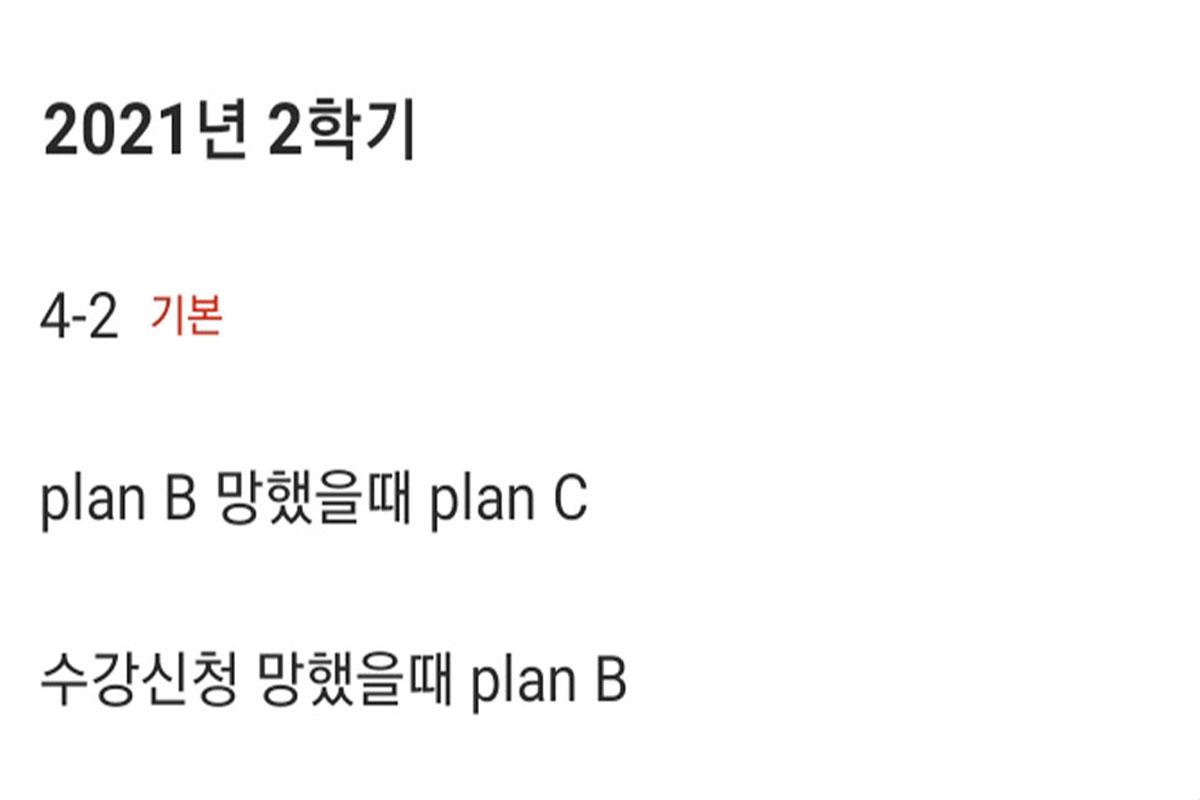September is officially here!
This means that the second semester of universities in Korea has begun.
There is a huge obstacle that a lot of Korean students dread each time this time of the semester rolls around, and that is the course registrations.
In Korea, students can apply to the courses they want through the university website.
But the competition rate is so fierce that it's just as difficult as trying to secure front row tickets to your favorite K-pop idol's concert.
Today, let's learn more about the process of registering for courses in Korea!
We hope that you'll find this article helpful for those who are curious about Korean universities or studying abroad.
University Timetable
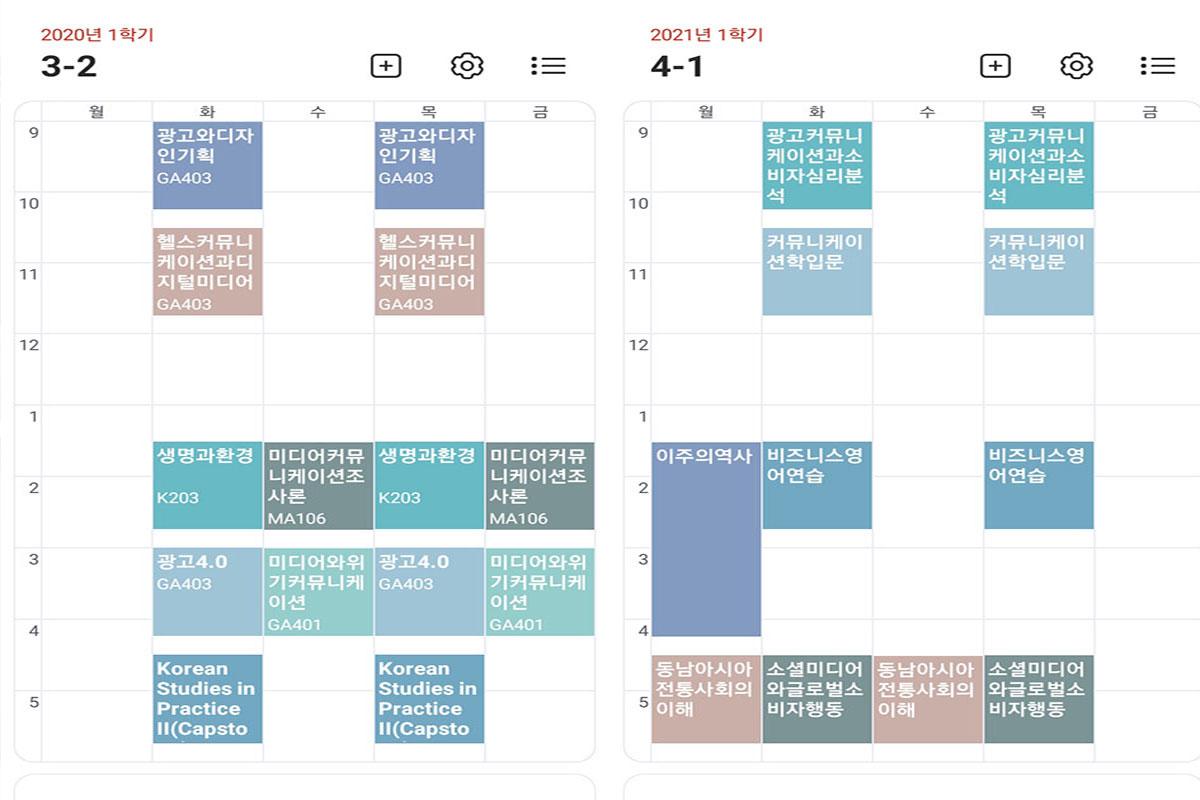 Our intern Jo Jaeeun's timetable for the third and fourth year.
Our intern Jo Jaeeun's timetable for the third and fourth year.
University classes in Korea generally consist of 1 to 3 credits and students take around 15 to 24 credits each semester.
Besides from busy job seekers, most full-time students usually take 5-7 courses every semester. That is if they've successfully managed to apply for all their desired classes.
If a student successfully secures all their classes, we call that an "all clear" (올클).
However, it's extremely difficult to achieve this!
I've applied for courses a total of 7 times so far during my academic years, but I've only been successful once.
Some applications for classes fill up quickly within a second of it being open.
Or you may try to search for other ways. And there are many methods that vary from university to university.
Course Registration Methods
Let's find out the different ways universities conduct their course registrations!
First come, first served
 Source: 전대신문, 이화여대 공식 블로그
Source: 전대신문, 이화여대 공식 블로그
The most common and traditional method is the first-come, first-served method.
In the 1970s and 1980s, before computers were even used, students registered for classes through this method.
Back then, students would write a list of subjects they would like to take on paper and hand it to their professors, who would give them approval later on.
Therefore, all the students waited in line for a long time at the professor's office or department office whenever course registrations were coming up.
I heard that there were a lot of cases where students would line up early in the morning to make sure that they would successfully register for classes.
 Source: 고대신문
Source: 고대신문
Nowadays, there is no need to wait in line for a long time from dawn because the registration for classes begins at a certain time.
The issue is that the popular lectures will be closed within less than a second after the registration server opens.
These popular classes include subjects that a lot of students are interested in such as liberal arts which helps them achieve good grades.
But some lectures that have a high competition rate also include mandatory courses that all students need to take to complete their program.
Therefore, sometimes there are students who fail to apply for classes even though it's a must for them to graduate on time.
 Source: 매일신문
Source: 매일신문
This is the pop-up that students who apply for classes will face too often.
When you enter the course registration portal website, you will receive a wait number in the order of students who entered.
You must now wait until the people in front of you in the virtual line have completed their registrations.
In other words, the longer the wait time is, the harder it will be for you to register for the classes you desire, right?

This is an actual picture of a class registration success and failure.
When I first entered the website, I was 62nd in line, and I was able to apply for all 6 subjects.
Then a semester later, I clicked on the link a little late and I was 1000th in line.
I could only apply for three out of six subjects and I was contemplating taking a semester off.
The first-come-first-served application method has the advantage of being able to apply for classes quickly and conveniently when you are fast.
However, it has the disadvantage of having a really fierce competition rate.
Also, there are too many students that click on the link all at once, which causes issues when accessing the website.
To avoid this issue, universities give different registration dates and times to different departments to help with overcrowding.
However, there are still many students who fail to register for their classes each semester.
Priority criteria
 Source: 숙명여대
Source: 숙명여대
Unlike the first-come-first-served method in which the fate of a semester is determined in one single moment, this method allows students to take classes based on various things.
Sookmyung Women's University students can apply for classes that they want to take within the first class registration period.
Then their class priority rankings will appear in the "Your Ranking" column at the far right of the application list.
The ranking depends on their grades, whether they are a student that is majoring in the subject or not, the number of credits you took in the previous semester, and the GPA.
However, it is best to refer to the school's official website for details.
The ranking changes at the end of the first class registration period and students frequently check their ranking to help them decide whether to apply for a course or not.
For example, if your ranking is 41st in a class with 40 students, you probably won't be able to take the class so you can choose to replace it with another class or wait for the top 40 students to drop the class.
After the first class registration period, students will know which classes they applied for were successful or not.
After that, they can apply for the first-come-first-served courses.
Mileage betting
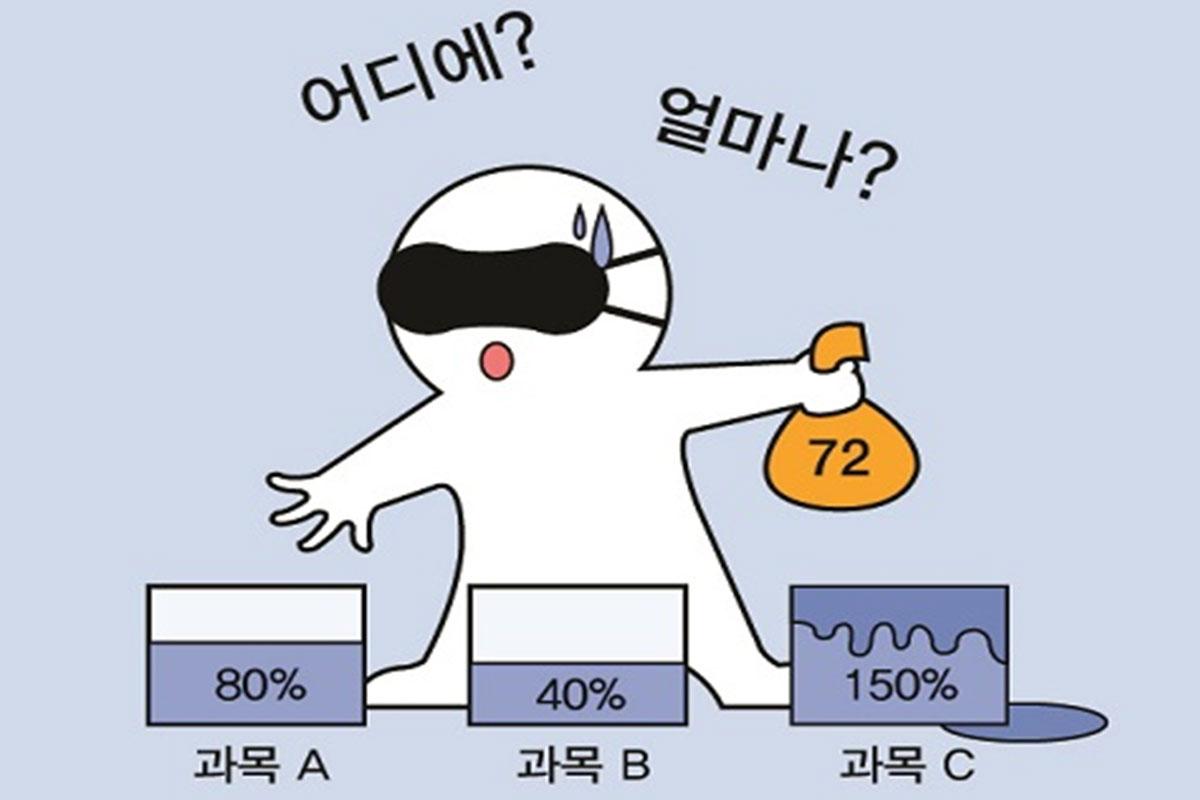 Source: 연세춘추
Source: 연세춘추
Yonsei University has been using this method since the second semester of 2015.
It is called the Yonsei Toto.
This word combines the name of Yonsei University with the name of Sports Toto, which is a Korean sports betting website.
Yonsei University offers something called mileage, and students can bet on it.
For example, student A is from department X. Department X students can take up to 18 credits per semester, and they will receive 72 mileage, which is 18 credits times four.
Now, student A can apply for 6 subjects by distributing 72 mileages well.
Students who bet a lot of mileages have first priority when picking classes.
But you shouldn't use all 72 mileages all at once on a subject that you really want to take.
If you do, you'll have no mileages left, so you can't apply for other subjects at all.
Also, the maximum betting per subject is limited to 36 mileages.
However, not all subjects have this limit.
Major subjects in some departments have a limited max mileage set to 12 to 18 or less than 36.
You have to use your brain and think carefully about how to use your mileage!
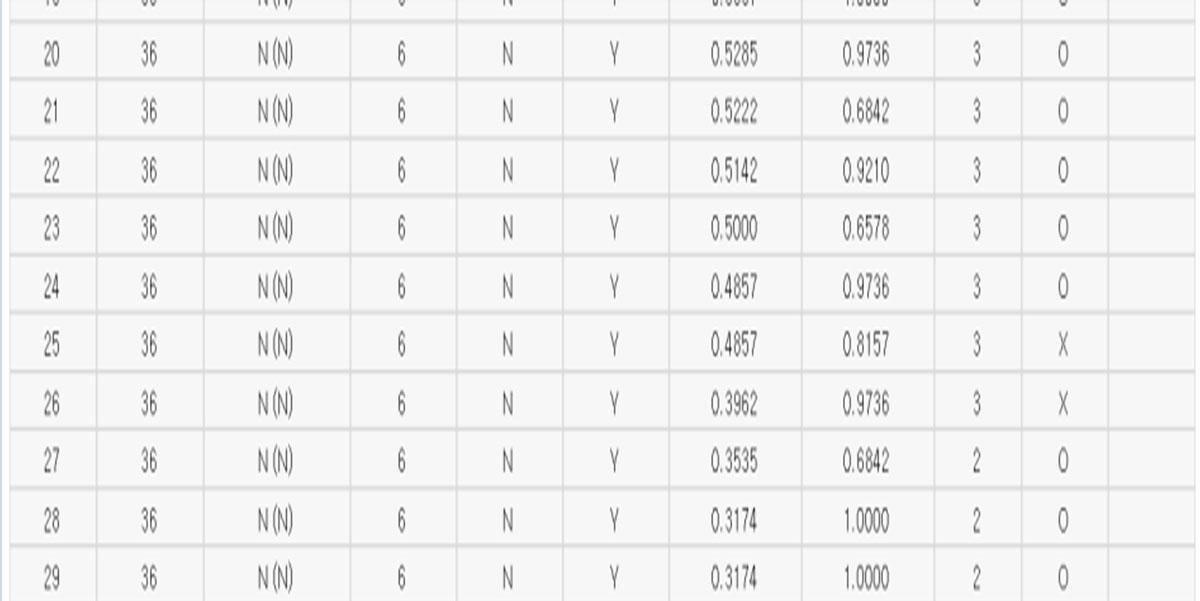
Source: 연세대 공식 블로그
But there is a problem with this as well.
The above list shows the most popular classes.
So many students invest 36 mileages to take these classes.
If there are many students who invest the same amount of mileage then the student's priority rankings will be taken into consideration.
Like Sookmyung Women's University, students will be ranked and they can apply for classes considering various criteria such as their major, their graduation date, and the number of subjects they already applied to for the semester.
Automatic system

In some schools, there is no set curriculum.
So applications for classes may not even be necessary.
In particular, in the first semester of the first grade, some schools require their students to just take the classes that are already set up for them.
In this case, there is no burden of having to register for each class.
However, the lack of freedom in setting up their schedules is challenging.
The most important thing is to check with each university because each school has a different registration method and there is a slight difference in each department and subject.
Tips On Successful Course Registration
Before the semester even starts, college students already have a huge headache just thinking about course registrations.
Here are some tips to make the process a little easier!
PC bang or high-functioning computer
 Source: 서울신문
Source: 서울신문
Many students visit PC bangs to successfully register for courses.
The computers at PC bangs are much faster than the computers we have at home.
But that doesn't mean that it's a must to visit a PC bang each time.
Some students are even successful registering for courses on their phones!
On the other hand, no matter how good the equipment is, if you have slow hands, you can easily fail to register.
Check the registration time
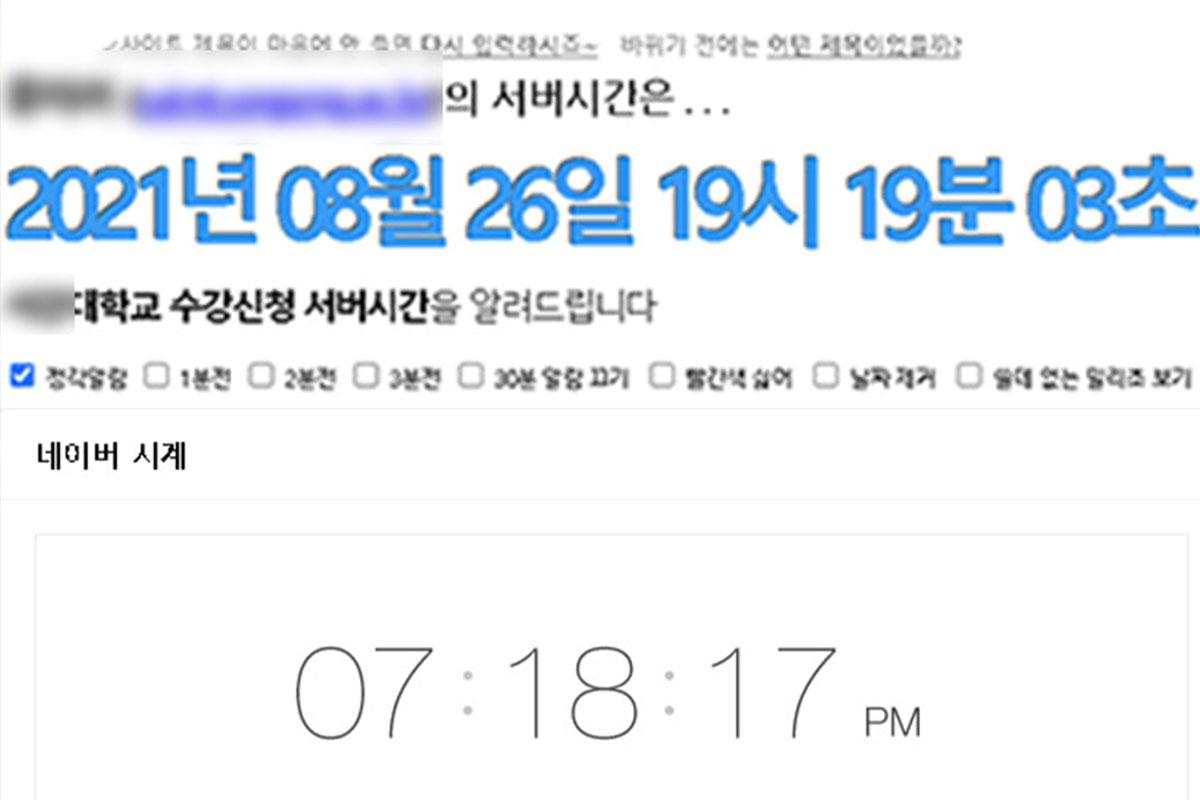
There is a registration time for each university.
Using a website called Navyism, you can accurately check the time.
Keeping an eye out for the accurate time is very important because each second is no time to waste.
In fact, this method is used to not only register for classes but also to book concert tickets.
Other methods
![fingers touching a dark keyboard]()
The competition is so fierce that some choose to use cheeky methods.
Some students ask their family members or friends to access various devices and help them register for classes.
However, it is now becoming more difficult to get away with this because schools are prohibiting access to multiple devices at once during registration.
Failed Class Registration. What Now?
It's really unfair if you fail class registrations even when you pay a high tuition fee.
Then what can students do after failing to register for the courses they want?
Register for remaining subjects
 Source: 아유경제 (The article has no relevance to this post)
Source: 아유경제 (The article has no relevance to this post)
There is something in common that all the class registration methods have.
It is to give more opportunities to students to have failed their first chance to apply for classes.
This is called the course correction period.
It's a period when you can modify the list of classes you applied for.
During this time, you can drop the class you have already applied for and other students can take your spot.
College students refer to this period as the 'picking up' period.
Students who failed to register for classes use this method the most when they make their timetable.
When I failed to register for classes and lacked credits, I quickly picked up other subjects to fill the credits.
Get in touch with the professor

Students who fail to register try to quickly send an e-mail to the professor to ask for acceptance.
Depending on the situation, the professor may increase the number of students in his class to make room.
However, there are so many students who send e-mails to the professor that it is rarely accepted.
There are some professors who only accept prospective seniors who cannot graduate if they do not take their classes.
I sent countless emails when attending college, and no matter how desperate I was, no professor accepted me.
Come up with plan B![screenshot of Korean plan B after failing to register for college classes]()
It is also a good idea to have a plan B and C in advance just in case you fail to register.
If you fail to register for a class, you have to pick up other classes quickly, which can be very useful when you have a backup plan.
Other methods![Korean student typing behind a computer]()
Source: 고대신문
As it became very difficult to apply for classes, students started selling and buying classes.
If students who fail to register for a class posted a message on the school community board saying, "I will buy X subject for X won.", students who have already applied for the classes will get in touch.
The students that sell these classes don't even want to take the class, but they only applied because they knew it would be very popular.
If student A who has to take the class sends money to student B who has already taken the class before, student B cancels their application after receiving the money.
This transaction is conducted secretly late at night or at dawn.
However, many students criticized this act and the university also stepped in to recognize this serious issue.
If a student cancels their application, the status will now not be updated immediately.
In other words, they changed the system so that all students can freely pick up classes that a student cancels.

Today, we learned about the class registration process of Korean universities.
What did you think? Isn't it very hectic?
Class registrations are one of the most stressful days at Korean universities.
We wish you the best of luck!


